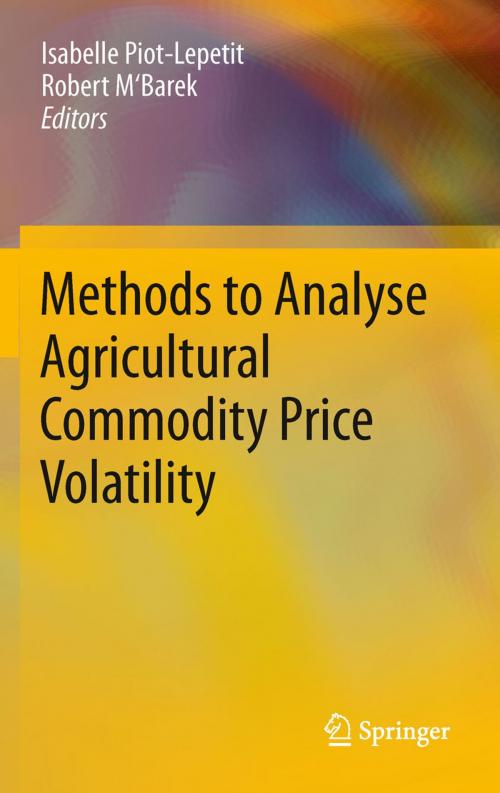Methods to Analyse Agricultural Commodity Price Volatility
Nonfiction, Social & Cultural Studies, Political Science, Politics, Economic Policy, Business & Finance, Industries & Professions, Industries, Science & Nature, Technology| Author: | ISBN: | 9781441976345 | |
| Publisher: | Springer New York | Publication: | June 10, 2011 |
| Imprint: | Springer | Language: | English |
| Author: | |
| ISBN: | 9781441976345 |
| Publisher: | Springer New York |
| Publication: | June 10, 2011 |
| Imprint: | Springer |
| Language: | English |
This book examines the issue of price volatility in agricultural commodities markets and how this phenomenon has evolved in recent years. The factors underlying the price spike of 2007-08 appear to be global and macroeconomic in nature, including the rapid growth in demand by developing countries, the international financial crisis, and exchange rate movements. Some of these factors are new, appearing as influences on price volatility only in the last decade. Although volatility has always been a feature of agricultural commodity markets, the evidence suggests that volatility has increased in certain commodity markets. A growing problem is that agricultural price shocks and volatility disrupt agricultural markets, economic incentives and incomes. With increased globalization and integration of financial and energy markets with agricultural commodity markets, the relationships between markets are expanding and becoming more complex. When a crisis such as a regional drought, food safety scare or a financial crisis hits a particular market, policy-makers often do not know the extent to which it will impact on other markets and affect producer, consumer and trader decisions. Including contributions from experts at the World Bank, the Food and Agriculture Organization of the United Nations, the USDA, and the European Commission, the research developed throughout the chapters of this book is based on current methodologies that can be used to analyze price volatility and provide directions for understanding this volatility and the development of new agricultural policies. The book highlights the challenges facing policy makers in dealing with the changing nature of agricultural commodities markets, and offers recommendations for anticipating price movements and managing their consequences. It will be a practical guide for both present and future policy-makers in deciding on potential price-stabilizing interventions, and will also serve as a useful resource for researchers and students in agricultural economics.
This book examines the issue of price volatility in agricultural commodities markets and how this phenomenon has evolved in recent years. The factors underlying the price spike of 2007-08 appear to be global and macroeconomic in nature, including the rapid growth in demand by developing countries, the international financial crisis, and exchange rate movements. Some of these factors are new, appearing as influences on price volatility only in the last decade. Although volatility has always been a feature of agricultural commodity markets, the evidence suggests that volatility has increased in certain commodity markets. A growing problem is that agricultural price shocks and volatility disrupt agricultural markets, economic incentives and incomes. With increased globalization and integration of financial and energy markets with agricultural commodity markets, the relationships between markets are expanding and becoming more complex. When a crisis such as a regional drought, food safety scare or a financial crisis hits a particular market, policy-makers often do not know the extent to which it will impact on other markets and affect producer, consumer and trader decisions. Including contributions from experts at the World Bank, the Food and Agriculture Organization of the United Nations, the USDA, and the European Commission, the research developed throughout the chapters of this book is based on current methodologies that can be used to analyze price volatility and provide directions for understanding this volatility and the development of new agricultural policies. The book highlights the challenges facing policy makers in dealing with the changing nature of agricultural commodities markets, and offers recommendations for anticipating price movements and managing their consequences. It will be a practical guide for both present and future policy-makers in deciding on potential price-stabilizing interventions, and will also serve as a useful resource for researchers and students in agricultural economics.















